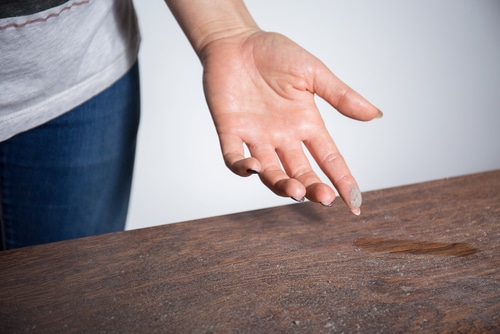
Indoor air becomes contaminated easily, and pollutants can build because they are confined within the home’s structure. Chemicals, organic allergens and other particulates all have the potential to cause health problems. Here are ways to reduce home pollutants and reduce the harmful effects.
Diminish Dust
The dust in your home is not as benign as it might seem. It can contain allergens, such as dust mites, mold spores, and pollen, in addition to lead particulates and other harmful substances. Diminish dust by doing the following:
- Have your ducts cleaned. If your home’s ducts haven’t been cleaned in years, have them inspected. They might be overdue for cleaning.
- Use quality air filters and keep them clean. Use pleated HVAC filters and look for those that are rated in the range of 8 to 13 on the MERV scale. This is the Minimum Efficiency Reporting Value scale, and indicates the size of particulates filters can trap.
- Remove dirty shoes at the door.
- Use mats at exterior entrances to encourage guests to wipe their feet.
- Clean flooring and other surfaces weekly. If you have carpeting, invest in a good quality vacuum cleaner that has a HEPA filter.
Install an UV Antimicrobial Lamp
These are fitted to your HVAC system. The UV light destroys microorganisms in air and can be effective in killing mold and bacteria.
Use an Air Purifier
Whole-house air purifiers are more effective than portable units for improving air quality within the entire home. However, a portable unit, used in main living areas, is better than none at all.
Have Your Ventilation System Checked
Organic pollutants aren’t your only concern. Chemical pollutants, often caused from treated wood, carpeting, vinyl and other materials, also contaminate indoor air. Many of these cannot be avoided, but you can reduce the impact by ensuring your home has the right ventilation system.
In addition, a service person can check that your home’s flues are designed properly and are unimpeded to allow toxic gasses to escape.